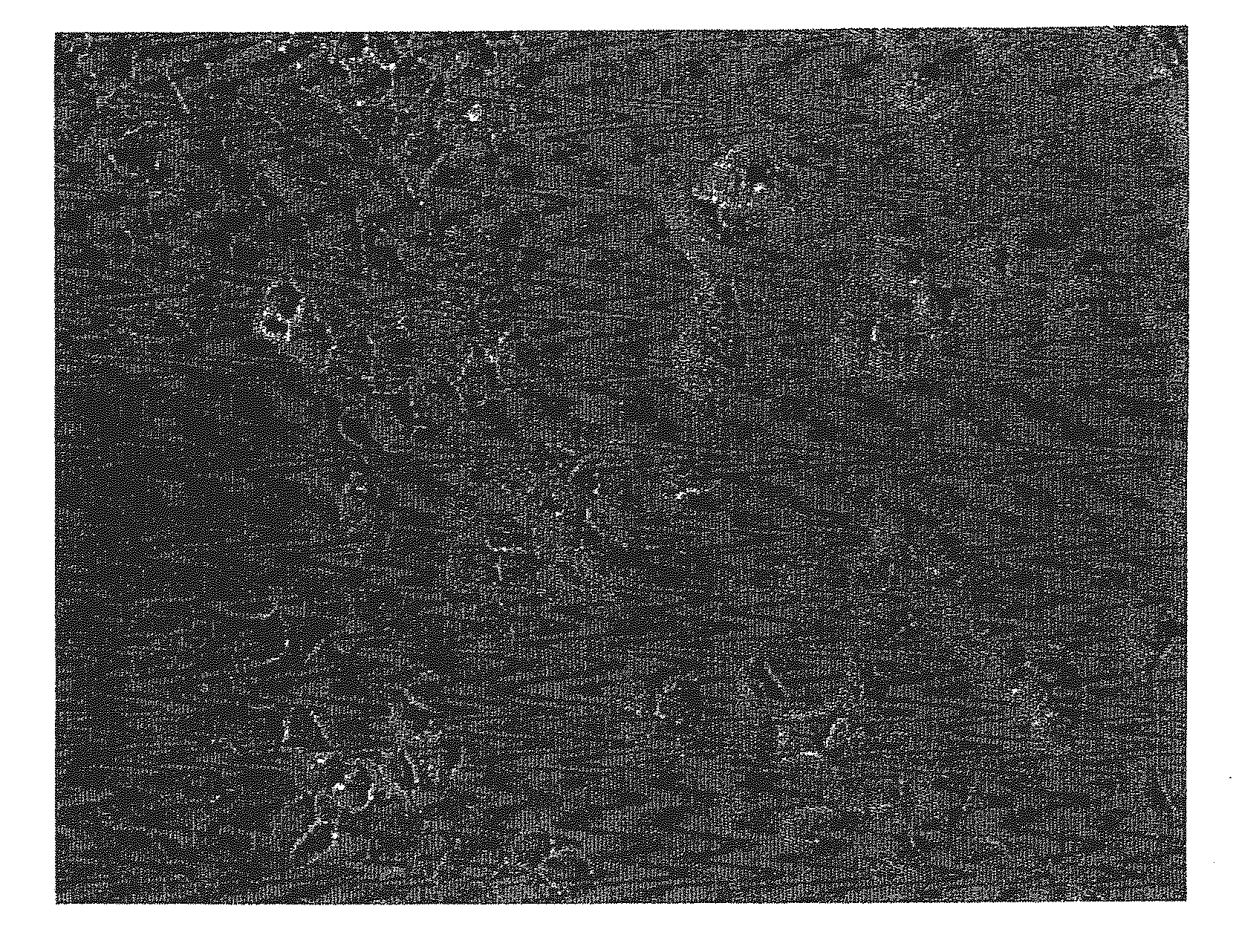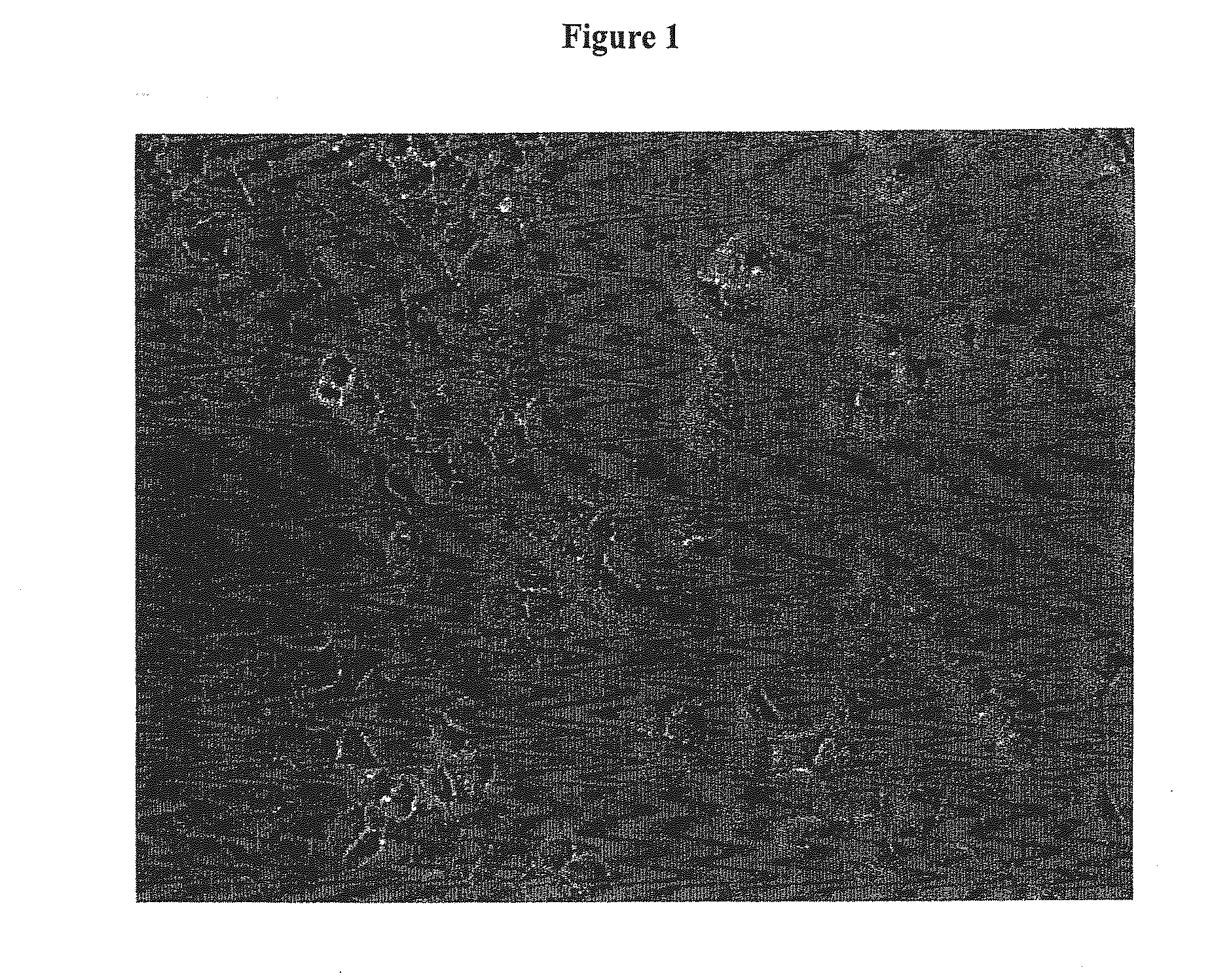Methods of Light Activated Release of Ligands from Endosomes
a technology of endosomes and ligands, applied in biochemistry apparatus and processes, peptide/protein ingredients, enzymology, etc., can solve the problems of only suitable cells in vitro, invasiveness, and inability to readily apply clinically to in vivo tissue samples, and achieve the effect of enhancing the availability of ligands
- Summary
- Abstract
- Description
- Claims
- Application Information
AI Technical Summary
Benefits of technology
Problems solved by technology
Method used
Image
Examples
example 1
Enhanced Availability of Ligand in A549 Cells
[0172]A549 cells were maintained in high glucose DMEM (Gibco-BRL) supplemented with 10% Fetal Bovine Serum (Gibco-BRL), 2 mM L-Glutamine (Gibco-BRL), and 1× penicillin / streptomycin (Gibco-BRL).
[0173]Seed cell suspensions were prepared by combining 75 μl of 1 mM oligomer (uniformly morpholino modified as taught, e.g., in Summerton, J. et al. Antisense Research and Development, Morpholino and Phosphorothioate Antisense Oligomers Compared in Cell-Free and In-Cell Systems 7:63-70 (1997)) per 425 μl cell suspension.
[0174]24-well plates were seeded with 0.5 ml 10-30K A549 cells per well. The cells are preferably evenly distributed across the plate. Cells were incubated for 18-24 hours at 37° C. in a humidified CO2 incubator. The media was aspirated from the cells and each well rinsed with 0.5 ml of Opti-MEM reduced serum medium (GIBCO-BRL). The media was aspirated and 0.5 ml of Opti-MEM was added to each well a second time.
[0175]The cells were ...
example 2
Enhanced Availability of Ligand in HUVECs (Human Umbilical Vein Endothelial Cells)
[0176]Human umbilical vein endothelial cells (HUVECs) were maintained in HUVEC media: EBM (Clonetics) supplemented with 8% Fetal Bovine Serum (Gibco-BRL), 2 mM L-Glutamine (Gibco-BRL), and 1× penicillin / streptomycin (Gibco-BRL), hEGF, Hydrocortisone, GA-1000, BBE, and 2% FBS (Clonetics).
[0177]On the day before transfection 24-well plates were coated with 0.5 ml / well gelatin for 5 minutes. Gelatin was aspirated and plates seeded with 0.5 ml 10-30K HUVECs per well. (Cells are preferably about 70% confluent at the start of transfection, and should be evenly distributed across the plate.) The cells are incubated at 37° C. in a humidified CO2 incubator.
[0178]On the day of transfection, a 300 μM stock solution of uniformly morpholino modified oligomer was prepared by diluting 300 μl of oligomer per 700 μl of HUVEC media. The media was aspirated from the cells, and 0.5 ml of the oligomer / HUVEC media was added...
PUM
| Property | Measurement | Unit |
|---|---|---|
| Wavelength | aaaaa | aaaaa |
| Wavelength | aaaaa | aaaaa |
| Flexibility | aaaaa | aaaaa |
Abstract
Description
Claims
Application Information
 Login to View More
Login to View More - R&D
- Intellectual Property
- Life Sciences
- Materials
- Tech Scout
- Unparalleled Data Quality
- Higher Quality Content
- 60% Fewer Hallucinations
Browse by: Latest US Patents, China's latest patents, Technical Efficacy Thesaurus, Application Domain, Technology Topic, Popular Technical Reports.
© 2025 PatSnap. All rights reserved.Legal|Privacy policy|Modern Slavery Act Transparency Statement|Sitemap|About US| Contact US: help@patsnap.com



